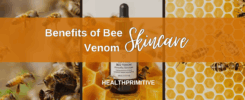Getting To The Root
According to medical text, liver cysts are referred to as hepatic cysts, which are defined as fluid-filled sacs that develop in the liver.
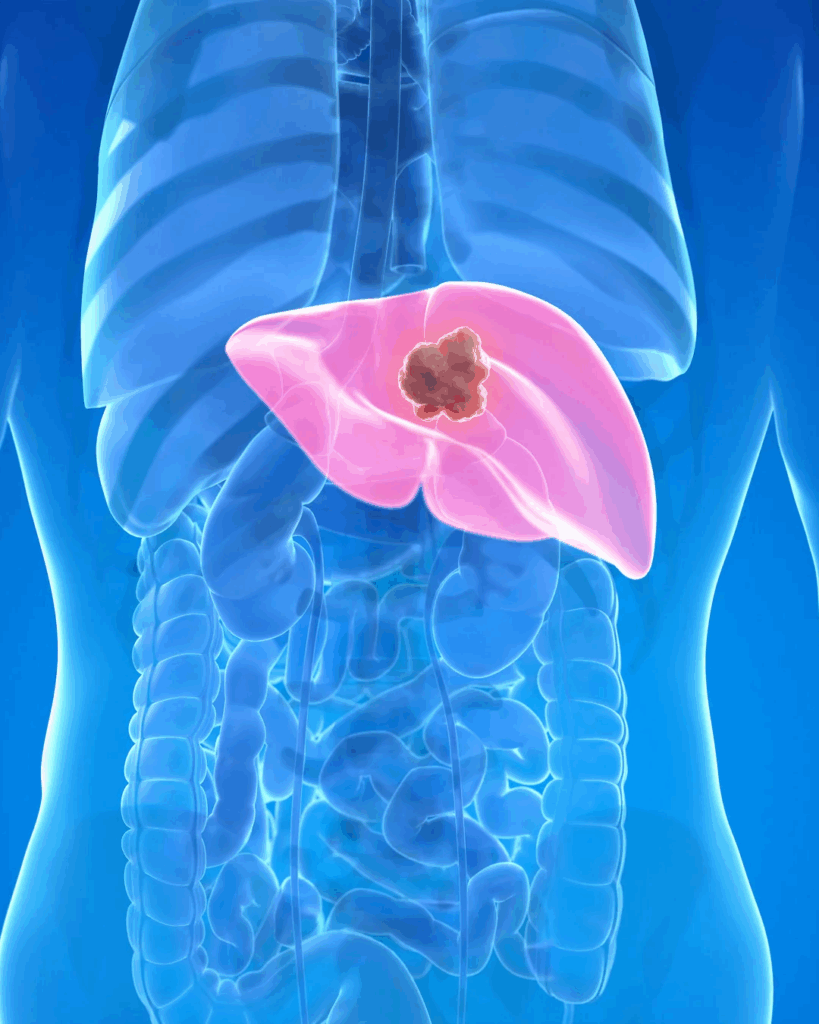
In terms of prevalence, liver cysts are quite common, especially in older adults, and are found in 18% of the population here in the United States, with these being the documented cases. They are often discovered incidentally since many individuals do not experience symptoms that are considered to be correlated.
There are several different types of hepatic cysts, and usually, the diagnosis is one of the following:
Simple cyst: The most common type of liver cyst, which is benign and “apparently”, rarely causes symptoms.
Polycystic liver disease (PCLD): A rare, inherited condition that causes the growth of multiple liver cysts, which can sometimes be associated with polycystic kidney disease.
Cystic hepatic lesion: A broader term that describes any fluid-filled lesion in the liver. It is often used in medical literature and diagnostic reports.
Biliary cystadenoma: A rare, mucin-producing, cystic tumor of the liver that can become cancerous and often requires surgical removal.
Cystic metastases: Cysts that result from the spread of cancer from other parts of the body.
Yet, one of the most common types of liver cysts is rarely mentioned or diagnosed by health care professionals, which is Hydatid Disease.
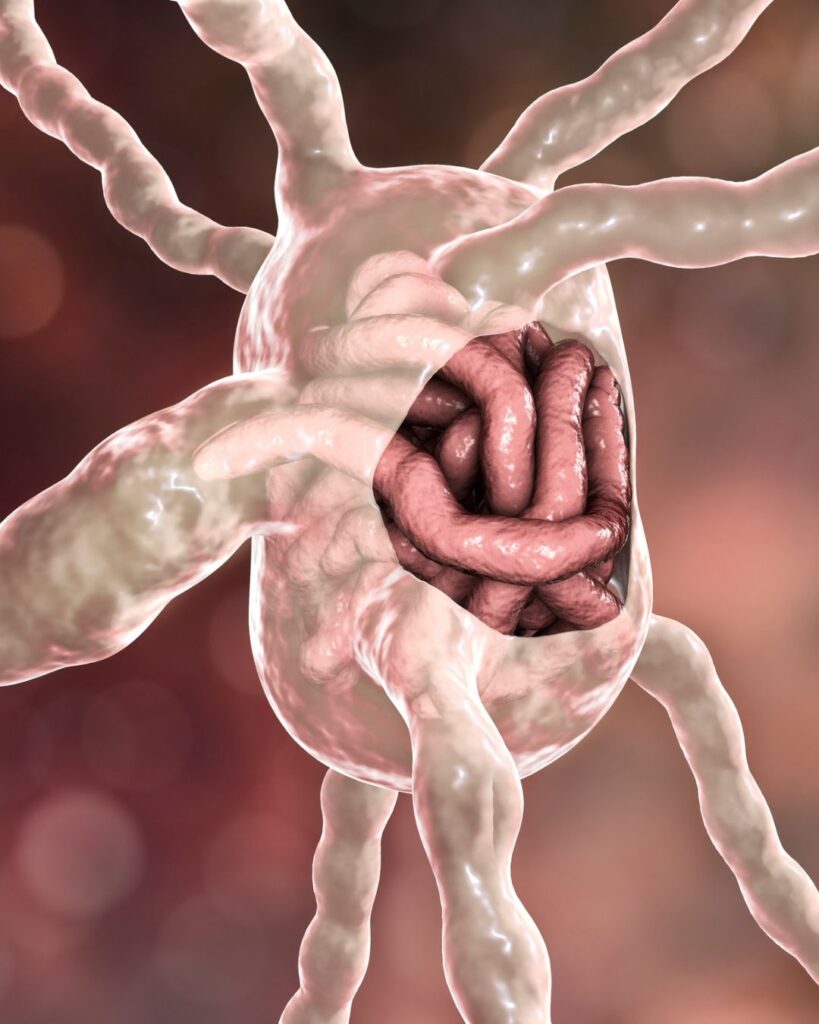
Hydatid Disease
Hydatid disease is caused by a parasitic tapeworm infection (genus Echinococcus), particularly Echinococcus granulosus. These cysts develop as a result of the tapeworm’s life cycle and the formation of larvae sacks (hydatid cysts) within the liver.
Tapeworm larvae form in a sack and produce a fluid-filled cyst called a cysticercus. The formation of these “cysts” is a key stage in the life cycle of many tapeworm species, especially those belonging to the genus Taenia. And because tapeworms live within a host, when the host develops a cyst, it is a very good indicator of a tapeworm infection.
The larvae typically settle in the animal’s muscle tissue but can also reach the eyes, brain, or other organs such as the ovaries. Here, they develop into the bladder-like, fluid-filled cysts, or cysticerci. These cysts can grow quite large and sometimes contain daughter cysts, hydatid sand (scolices), or membranes. They can cause symptoms such as pain, swelling, or complications like cyst rupture, which would release the tapeworm embryo.

Once these eggs hatch in the animal’s intestine, weather on their own or accidentally through procedure, they release an embryo called an oncosphere. The oncosphere uses its hooks to penetrate the intestinal wall and travels through the bloodstream to other parts of the body. At this point, the host is in big trouble.
Many diagnoses such as “simple cysts” or “cystic hepatic lesions” could actually be hydatid disease. Yet, sadly, many people do not question a doctor’s diagnosis and usually continue to go forward with traditional treatments, which can sometimes spread the infection and make things worse.
Symptoms of Hydatid Disease
Asymptomatic in early stages
Abdominal pain, especially in the upper right quadrant (liver cysts)
Chest pain and cough (lung cysts)
Nausea and vomiting
Enlarged liver or spleen
Jaundice (yellowing of the skin and eyes)
Fatigue
Less common symptoms
Allergic reactions, such as anaphylaxis
Bone pain and fractures
Brain cysts, causing seizures, headaches, and neurological problems
Rupture of the cyst, leading to severe pain, fever, and allergic reactions
How do humans get tapeworms?
There are many different ways humans can acquire acquire parasites, and most are through the same methods. Below is the list of the most common ways to get tapeworms:
Eating Undercooked Meat:
Consuming raw or undercooked meat from infected animals, such as beef, pork, or fish, can harbor tapeworm larvae.
Contaminated Water:
Drinking water contaminated with tapeworm eggs can lead to infection. This is common in areas with poor sanitation or where human or animal feces enter water sources.
Contact with Infected Animals:
Handling or being in close contact with infected animals, such as dogs or cats, can expose humans to tapeworm eggs. This is one of the most common ways humans acquire tapeworm.
Eating Infected Insects:
In rare cases, humans can become infected by eating insects that have consumed tapeworm eggs.
Auto-Infection:
In some cases, humans can re-infect themselves by accidentally ingesting tapeworm eggs they pick up on their hands while wiping or scratching their anus or the skin around it.
By making sure your meat is thoroughly cooked, avoiding dirty water, and washing your hands after using the restroom and handling your pets, most people can avoid being infected.
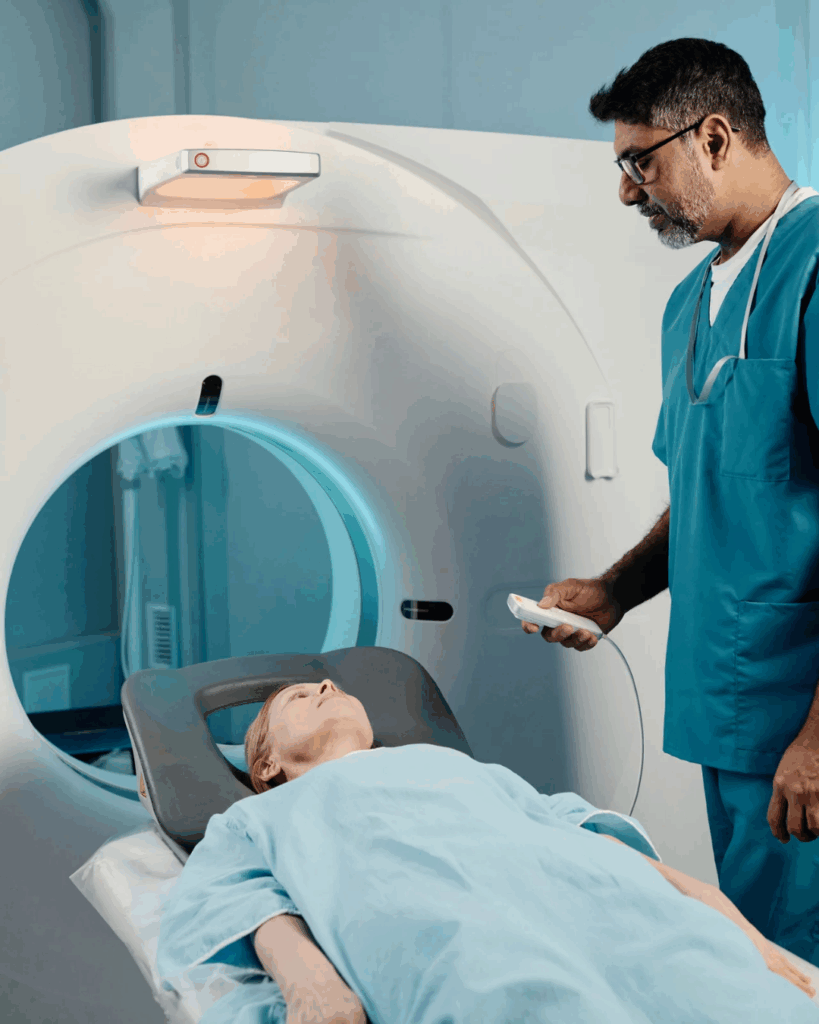
Diagnosis & Treatment
Because Western medicine rarely recognizes parasitic infections as the root cause of any disorder, most people who suffer from hydatid disease go undiagnosed or are given an incorrect diagnosis. Sadly, all too often, many of these people undergo surgeries to remove these cysts, which simply spreads the infection further around the body.
A while back, I had a client who was diagnosed with a liver cyst. After speaking with her doctor, she went home and did her own research, where she discovered the possibility of hydatid disease. When her concerns were ignored by the doctor, she took it upon herself to do a 60-day parasite cleanse, which appeared to be successful. When she went back to the doctor for a CT scan, her cyst had not surprisingly disappeared. Even then, the doctors refused to admit their mistake.
In most cases, receiving a correct diagnosis involves imaging techniques like ultrasound or CT scans, complemented by serological tests to detect antibodies against the parasite. If a correct diagnosis is made, treatment typically includes antiparasitic medications such as albendazole or mebendazole, and in some cases, surgical removal or drainage of the cysts. Unfortunately, these treatments come with their own potentially harmful side-effects and risks.
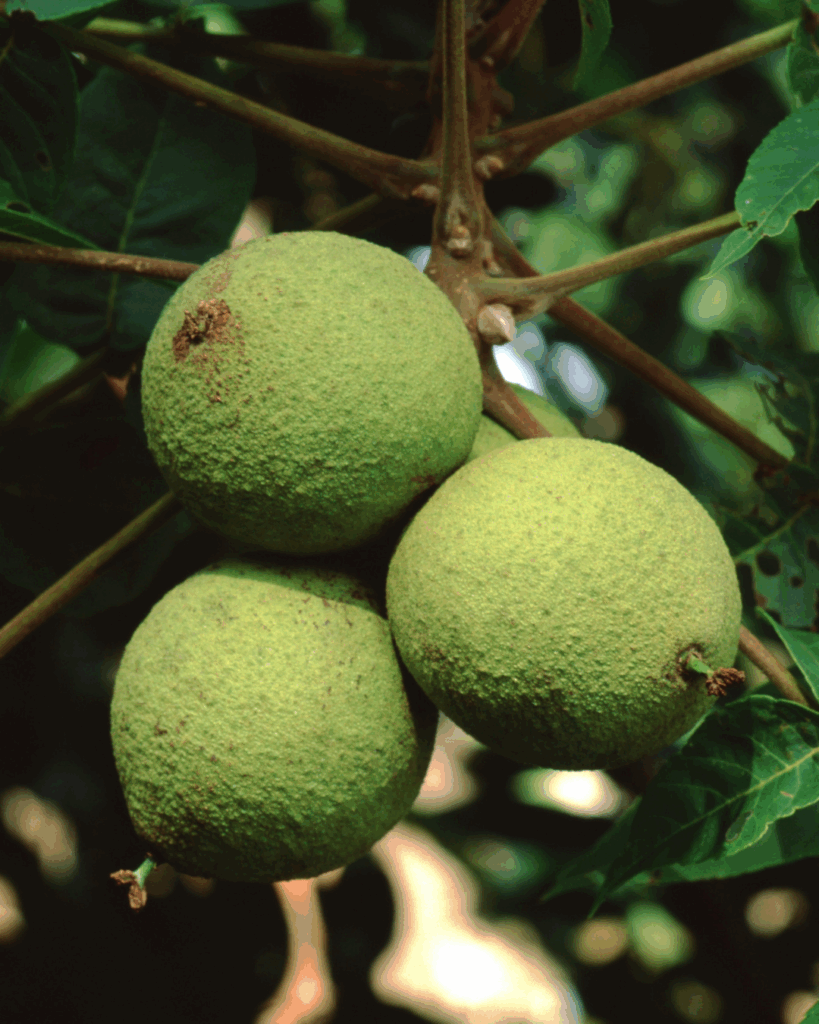
Natural Alternatives
Many holistic practitioners and herbalists believe that parasitic infections are at the root cause of many modern disorders, including cysts, tumors, thyroid disorders, autoimmune disorders, and even some types of cancers. Most recommended performing a parasite cleanse, once every two years, if not yearly, to prevent future complications and infections like hydatid disease or the others listed above.
The most trusted remedy for these situations contains a trio of herbs, black walnuts (the hulls specifically), wormwood, and cloves. These plants are considered superior antiparasitic’s and have long been used to treat parasitic infections in humans.
Black walnut hulls, in particular, contain a chemical compound called juglone, which works by disrupting the metabolism of parasites and inhibiting their growth. It is also said to oxygenate the blood, creating an environment inhabitable to parasites, then removes them from the body through its laxative effects. Above this, black walnut extracts have shown to work systemically in the body, meaning it can reach all systems and organs. In simpler terms, it can reach parasites in all parts of the body, including the brain, eyes, etc.
Overall, herbs like black walnuts have been time-tested for generations and have far fewer side effects than antiparasitic medications or surgery. They have also been proven to be just as effective.
If you’re interested in learning to make your own “antiparasitic,” you can visit our blog here, and follow our step-by-step instructions.
In order to perform a successful parasite cleanse, we recommend following our Parasite Cleansing Protocol that you can find here. This will help assist you through the entire process.
Depending on the severity of the infection, a 30-90 cleanse may be required. Keep in mind that every individual is different, including their physiology. It’s extremely important to listen to your own body. If you take prescription drugs, do your own research or speak to a doctor or pharmacist before consuming any medicinal herbs.
Safety Considerations
Herbs like black walnut and wormwood should not be taken long-term. If you have health conditions such as a kidney disorder or a liver disorder, it’s recommended to do your own research or speak to your doctor before consuming these plants. Pregnant and nursing women should avoid. This information is for educational purposes only.
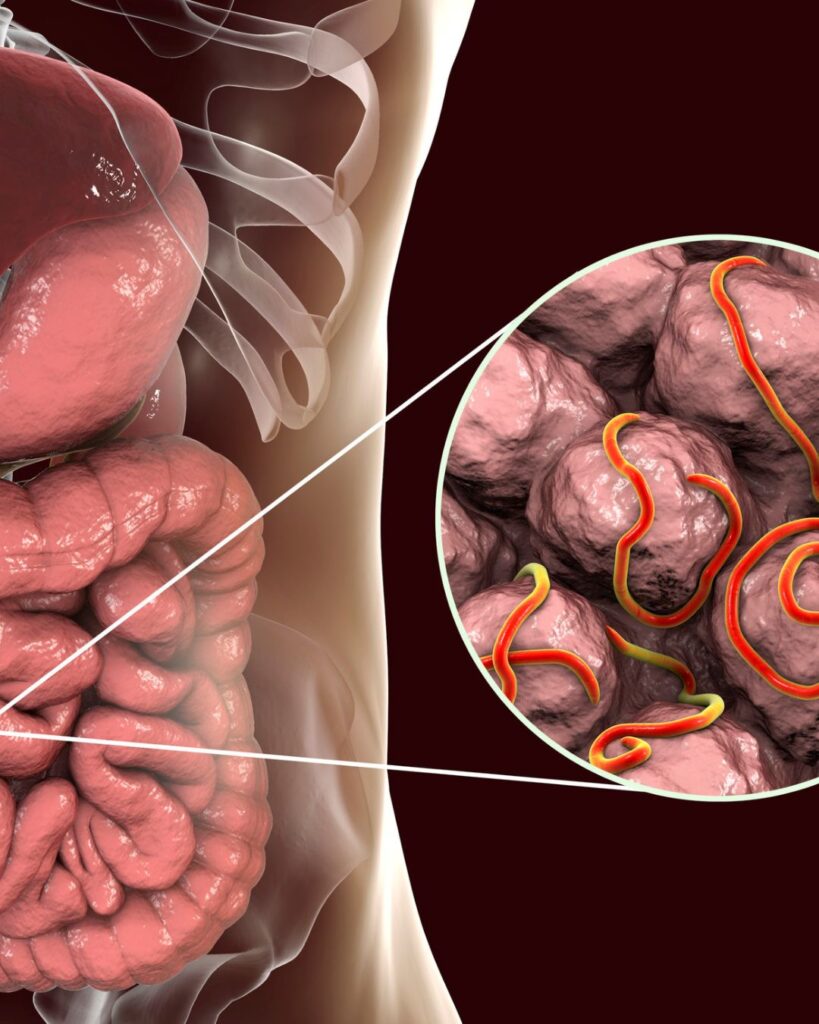
Final Thought
As biological mammals, humans are not exempt from parasites, just like any other creature on earth. We all acquire them at some point in our life. Some of these parasites can hide in our system for years without ever being noticed, as where others can become extremely problematic. By periodically cleansing our bodies of these unwanted invaders, we lessen the chances of developing future diseases or disorders that are linked to parasitic infections.
Remember, nobody is going to care about your health quite like you.
Stay Wild

Kayce Heister
Kayce is an Author, Clinical Herbalist, Naturopathic Practitioner (HHP), Active Forager, Wild Food Chef and Mother of three. She has spent the last 20 years practicing herbalism and natural health, and spends most of her time educating others on the amazing potential the natural world can offer.
Sources Below
https://pmc.ncbi.nlm.nih.gov/articles/PMC10184195/
https://pmc.ncbi.nlm.nih.gov/articles/PMC4033287/
https://www.who.int/news-room/fact-sheets/detail/echinococcosis
https://my.clevelandclinic.org/health/diseases/23558-hydatid-disease
